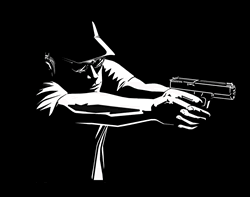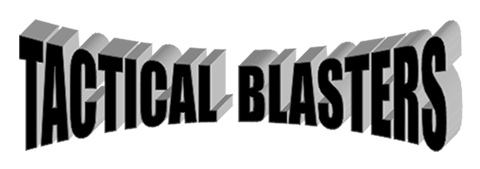

International Defensive Pistol Association
Dorr, Michigan

Home
New Shooter Info
IDPA Match Rules
Match Results
Schedule
Map to SKSC
Contact
Links
IDPA
SKSC
The Top 10 Reasons Why You Should Shoot IDPA
The 4 rules of Gun Safety
1). The gun is always loaded!
2). Never point a gun at something you are not prepared to
destroy!
3). Keep your finger off the trigger until your sights are
on the target!
4). Always be sure of your target and what is behind it!
If these simple rules were always followed, firearm accidents would never happen. Pay particular attention to rules 2 and 3. When shooting IDPA your finger should never be inside of the trigger guard until you are on target and ready to shoot. Always get your finger out of the trigger guard before moving. Always be aware of your muzzle’s direction and keep it pointed safely downrange. Pointing a muzzle up or down is not safe, always keep it pointed at the back stop. Certain IDPA courses of fire may test your skills of keeping the muzzle pointed in a safe direction. Be mindful of your muzzle and trigger finger placement, and you will always shoot safely.
New Shooter Orientation
Due to the large number of new shooters, we (IDPA, Steel Challenge, and USPSA) are creating a mandatory training class.
If you wish to participate in any one of these three pistol sports, at South Kent Sportsmans Club, and do not currently hold a classification in any one the previously mentioned sports, then you would need to take the “New Shooter” class (101), before participating. While you may be an experienced shooter, we all feel that this class will help orient you to our safety expectations within our range. This class will cover drawing a handgun, range practices and safety, and general expectations within each sport.
Contact Tom Tiethoff to reserve your seat in the “New Shooter” class.FAQ / Welcome to IDPA PDF of the Power Point slides for the 101 class
If you feel that you may be qualified to be exempt from this class please speak with any of the Match Directors, as you may be able to opt out of the class, at the Match Directors discretion.
Walk Through
The walkthrough is read to all shooters on the stage at the beginning of each stage. This information is the description of what is to be performed during the course of fire. Questions will be answered after the walkthrough is read. If there is anything about the course of fire that you don’t understand after the walkthrough is read, please ask.
Range Commands
Range Is Hot: This is the first command given to each shooter starting the action of shooting a stage. This command signifies the start of the CoF. The shooter will make sure that their eye and hearing protection is in place. It is also notification to anyone in the shooting bay to check that their own eye and hearing protection is properly fitted.
Load and Make Ready: When the shooter has proper eye and hearing protection, the SO will issue the Load and Make Ready command. The shooter will prepare the firearm and magazines to match the required start position for the stage. Typically, this is to load the firearm and holster. After loading the firearm, holstering will be performed by the shooter while standing with the proper care to insure the firearm is free of anything inside the trigger guard and the muzzle is oriented away from the shooters body for safety. Additional options may include nontypical loading or staging of equipment. The shooter will then assume the starting position necessary for the stage. If the shooter's firearm is not to be loaded for the start of a stage the command used will be "Make Ready". Any additional actions that appear as a rehearsal are not permitted.
Are You Ready? After "Load and Make Ready", the SO will ask the shooter "Are You Ready?" If ready, the shooter should respond verbally, or by obvious nodding of the head, but may also choose to stand ready. If there is no response from the shooter in approximately 3 seconds, the shooter is considered to be ready.
Standby: This command is given after the shooter is ready. This command will be followed by the start signal within 1-4 seconds. The shooter may not move or change positions between the "Standby" command and the start signal, unless required to do so by the CoF.
If Finished, Unload and Show Clear: This command will be issued when the shooter has apparently finished shooting the stage. If the shooter is finished, all ammunition will be removed from the firearm and a clear chamber/cylinder will be shown to the SO. If the shooter is not finished, the shooter should finish the stage and the command will be repeated.
If Clear, Slide Forward or Close Cylinder: Once the SO has inspected the chamber/cylinder and found it to be clear, this command will be issued, and the shooter will comply.
Pull the Trigger (Not required for revolvers): The shooter will point the firearm at a safe berm and pull the trigger to further verify that the chamber is clear. If the firearm fires, the shooter will be disqualified from the match. This requirement also applies to firearms with a de-cocker or magazine disconnect. For firearms with a magazine disconnect, an empty magazine, or dummy magazine must be inserted before the trigger is pulled, and then removed again.
Holster: The shooter will safely holster the firearm.
Range is Clear: At
this point, we will all go down range and score the targets, then paste and reset the targets.
Everyone, except the next shooter, is expected to participate in this part of the process
Additional Range Commands that you may hear:
Finger This command is called if the Safety Officer cannot see a clear trigger guard, when the shooter is moving with a loaded firearm.
Muzzle This command is called if the muzzle is nearing a dangerous angle.
STOP: Anyone can call the STOP command. This may be called for a safety issue, or violation.
For complete IDPA rules, the current IDPA Book can be viewed from the Match Rules page on the IDPA web site.